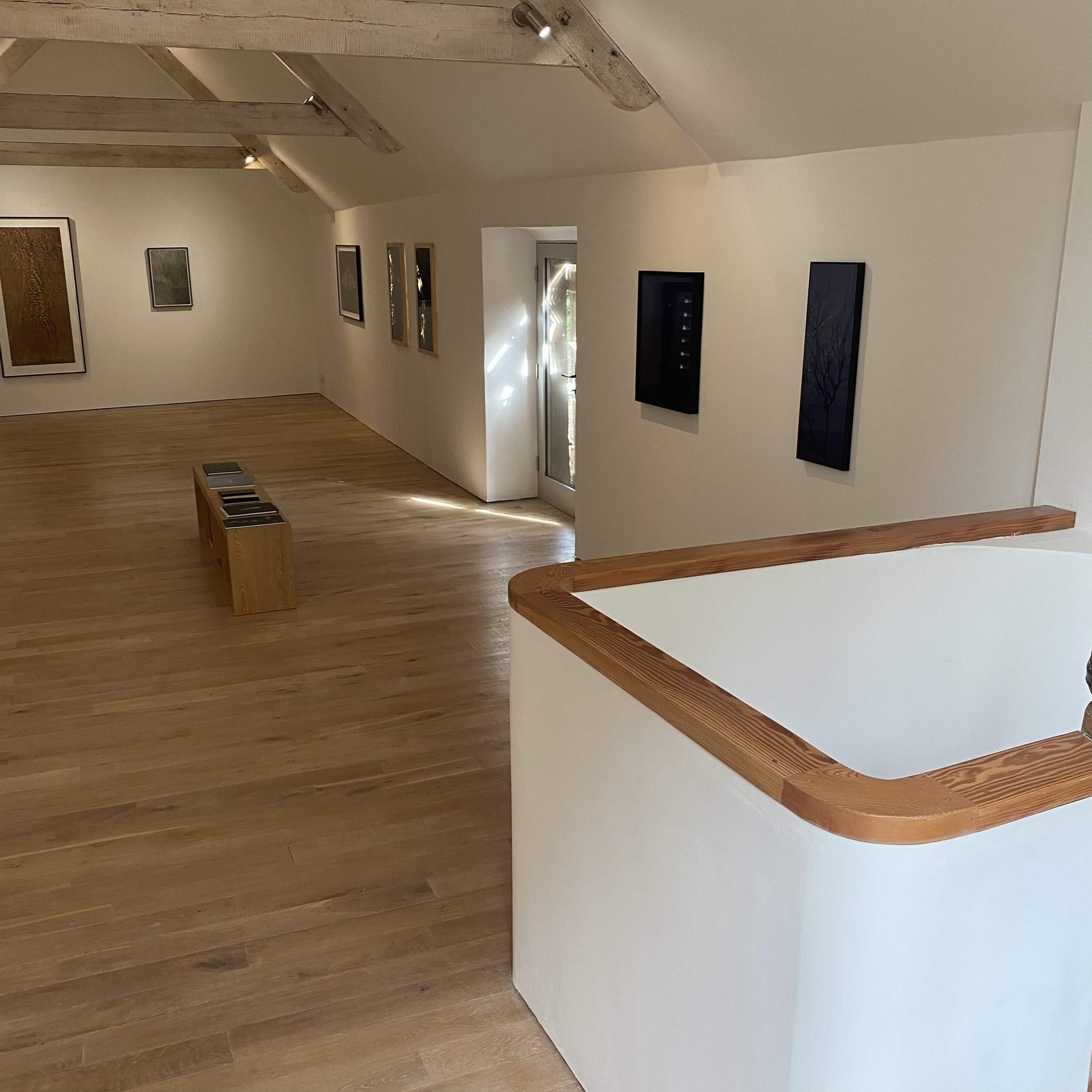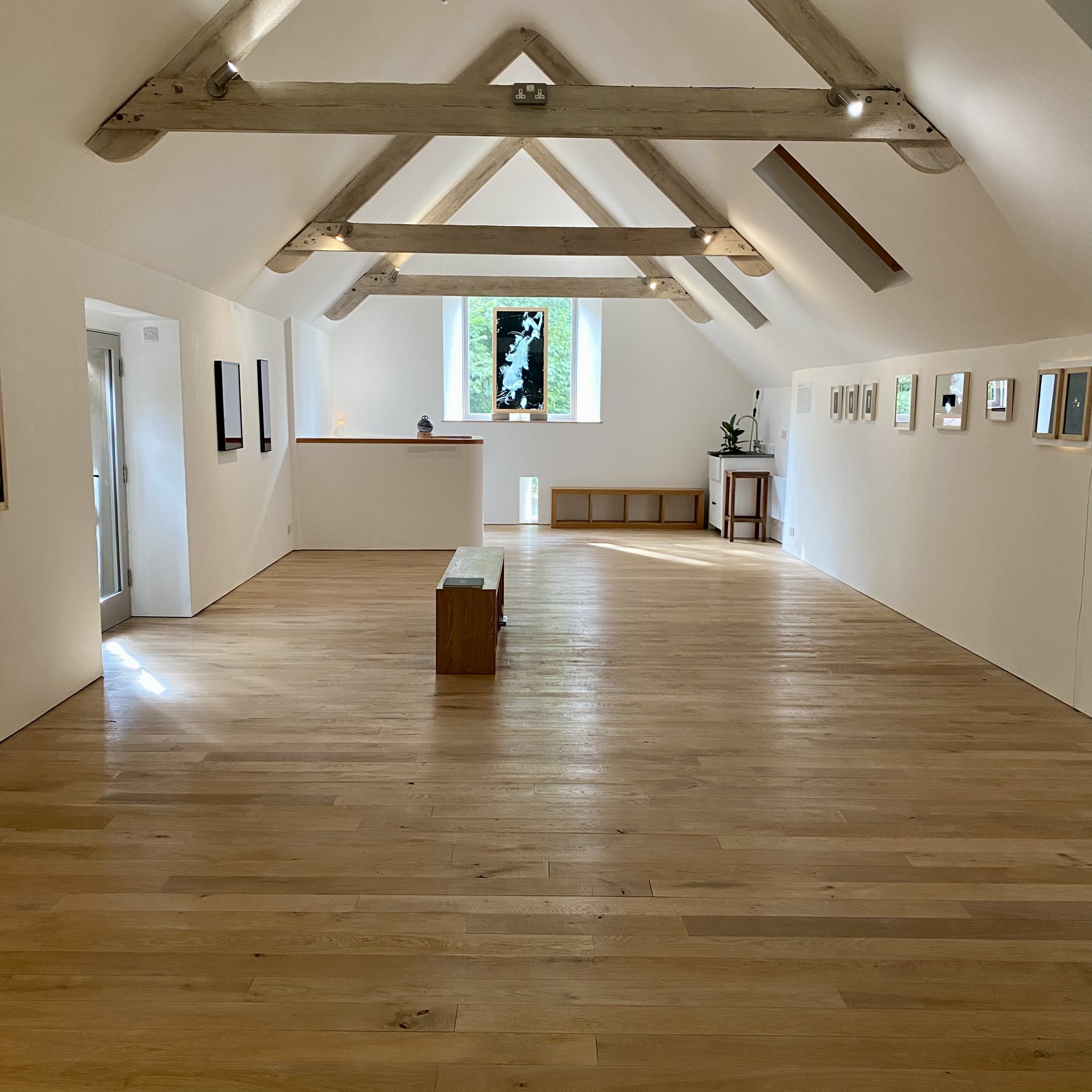Night Shift
This exhibition brings together
works by artists Susan Derges,
Sarah Gillespie and Martin Prothero,
to celebrate distinctive aspects of
the nocturnal.
Each artist has developed a unique relationship with the covert mysteries of night, and with the unusual working hours that the title brings to mind. Artists may choose to work strange hours for both practical and emotional reasons, but in this exhibition nighttime working is chosen as a necessary feature of process, as well as a time of sustained concentration.
The ‘shift’ of the title additionally suggests transformation. For humankind, nightfall has historically implied an increase in danger, iconically invoked by the howl of wolf, and a corresponding increase in transgressive behaviour, fictionally embodied in the shapeshifting of vampire or werewolf, ‘creatures of the night’ that cause the fearful to lock their doors tightly and light candles against the darkness. Meanwhile, actual creatures of the night adapt to the absence of light with specialist behaviour, whether as prey or as preyed-upon, as exemplified in the tapetum lucidum that enhances the night vision of badgers, or the constantly evolving sonar warfare of bat and moth.
Contemporary society has its candle equivalents: streetlights, late-night shopping malls, and box sets, to keep the dark at bay*. In this recoil of fear, we risk depriving ourselves of profound engagement with a distinctive sphere, one which might paradoxically be illuminating. In this exhibition each of the artists reveals features of the night that may inform and expand the human psyche, and enhance our engagement with the natural world.
The focussed engagement with details of the natural world apparent in the works of these three artists has been enhanced by a night-time sensibility, one that takes into consideration darkness as wilderness, and its potential for transformation and revelation; it also proves itself a sensibility capable of pursuing an image through long hours of concentrated practice.
Susan Derges became internationally renowned for her pioneering, lens-less photographic works in which night provides the necessary cover for her capturing of the secret lives of a shoreline, river, or pond, where the act of exposing a submerged plate, using water-surface as lens, reveals structure and detail the artist has intuited. Derges’ deep empathy with the subtle processes of the natural world have led to a broader study of natural forms and phenomena in a studio-laboratory setting - the resulting images recapturing the poetic immediacy of their natural setting.
By night, Sarah Gillespie delicately - and temporarily - captures her aesthetic prey, rising pre-dawn to check the moth-traps for specimens she wishes to study up-close. Through the painstaking process of the mezzotint, she then burnishes away the illuminated form from mezzotint’s most nocturnal of blacks, a process that metaphorically evokes the light-seeking night-life of these sublime insects. Because daylight reflects distractingly off the plate, Gillespie herself works at night by the light of a diffuser, which she recognises as similar to a moth trap. The artist’s intention goes beyond celebration of beauty to draw attention to the precarious plight of moth species endangered by human action and inaction.
Martin Prothero uses an archetypal response to night - the lighted candle - to meticulously soot a sheet of glass with finest carbon black. These sensitised plates are then set at night into a landscape the artist knows intimately, so they may capture the movement of a variety of nocturnal animals, from badgers to slugs, who leave their inadvertent indexical marks that are at once documentary and poetic. Tellingly, this series of works, which samples the behaviour of many threatened species, commenced before the term ‘carbon footprint’ was in common usage.*To keep something or someone '“at bay”is a old hunting term that comes from an old French word “aboyer" meaning to bark, referring to hounds kept away from, and yet cornering, their quarry - a fox, deer, or wolf.
Night Shift - the tour
The artists’ talk…




























